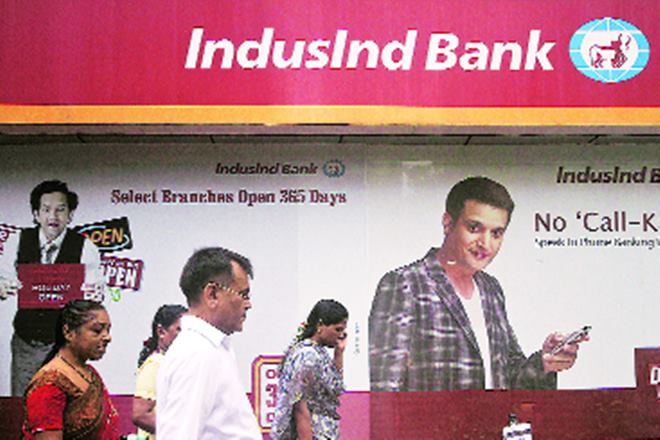IIB came in below estimates driven by IL&FS. There’s an additional `35 bn exposure to stressed groups (in line). As a result, provisions could be higher in FY20, although earnings may recover in FY21. BHAFIN integration should help too. Notwithstanding this, investors should be introspective on valuation multiples accorded vis-a-vis peer banks that have succeeded to stay clear of lumpy/potentially-risky loans. Lower
PT to Rs 1,460.
Balance sheet
Loans grew 28.6% y-o-y although there was about a 4% uplift from the assigned loans from BHAFIN. Retail grew 27% while corporate grew 29.6%. Deposit growth at 28% was led by 42% growth in CA, 18.7% in SA and 30.5% in time-deposits. If we heard it right, RBI has likely asked the bank to de-risk its deposit base with management indicating that they intend to lower the concentration by 2-3% every year.
Margins
Overall NIMs were lower sharply at 3.59% as the bank reversed accrued interest on the IL&FS exposure, excluding which NIMs should have been steady sequentially at 3.84%.
Asset quality
Gross NPLs were up 97 bps sequentially to 2.1% whereas net NPLs were up 62 bps to 1.21%. Security receipts were at 32 bps and restructured standard assets were 9 bps, with overall net stress at 162 bps. The entire IL&FS exposure of Rs 30 bn was downgraded with 70% provision created on holdco and 25% on SPVs. `10 bn was written off — management highlighted deferred tax benefits as one of the reasons.
Stressed exposure and its implication
Beyond IL&FS, IIB disclosed Rs 35 bn (1.9% of loans) of funded+non-funded exposure to ADAG, Essel, Dewan and perhaps a few other companies. This is quite small and manageable, although we aren’t sure of the absence of other similar exposures. Management also disclosed Rs 6.4 bn of SMA2 (0.34% of loans) and Rs 6.2 bn of SMA1 (0.32% of loans), with no overlap with stressed groups. Management also indicated the below investment grade book at 7.5% (in the past used to be 10%).
In short, what this should inform us is that the bank always ran on the right of the normalised risk bell-curve. The question, therefore, that we leave with investors is — what is the ideal discount that IIB should trade at versus say, an HDFC Bank or Kotak Bank, both of which have delivered growth and profitability (RoE) without taking avoidable borrower specific credit/solvency risks?
Change in estimates
We had penciled in BHAFIN integration. But Q4 numbers imply some overlaps & accrual of benefits — accordingly we cut FY20e by 3.6% and FY21e by 0.6%, led by lower NIM offset by lower OpEx. We bake in 19% CAGR in adj.
BV (no BHAFIN in the case) over FY19-22e. We anchor P/B at 2.9x marginally above the last 10-year average.


